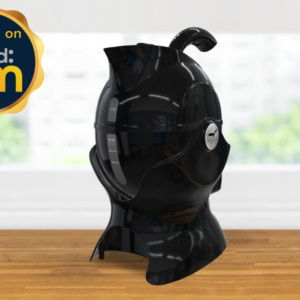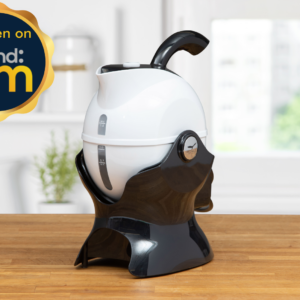As the days grow shorter and the temperature drops, winter can bring a unique set of challenges – especially for older adults or anyone living with arthritis, mobility issues or reduced hand strength.
Cold weather doesn’t just make us reach for an extra blanket; it can also affect how we move, feel, and manage everyday tasks at home.
But with a few thoughtful adjustments and simple routines, winter can still be a season of warmth, comfort, and independence.
Why Winter Feels Harder on the Body
You might notice your joints feeling stiffer or your hands more reluctant to cooperate on cold mornings. That’s not your imagination – when temperatures drop, our muscles tighten and blood flow decreases, making movement more difficult.
For those living with arthritis or similar conditions, cold weather can intensify discomfort and make everyday tasks – like cooking, cleaning, or even making a cup of tea – feel more challenging.
The key is preparation. Small changes to your daily environment can make a big difference to how you move and feel this season.
Create a Warm and Safe Home Environment
Keeping your home comfortably warm is essential, but safety comes first. Here are a few tips to make your space both cosy and secure:
- Maintain a steady indoor temperature: Aim for 18-21 °C where possible. Sudden drops in temperature can cause muscles to stiffen and increase the risk of slips or falls.
- Dress in light, layered clothing: Multiple thin layers trap heat more effectively and are easier to adjust throughout the day.
- Watch out for cold surfaces: Kitchen counters, taps, and handles can become surprisingly chilly. A warm tea towel or a non-slip mat can make these tasks easier and safer.
- Good lighting is essential: With shorter days, make sure key areas like hallways and kitchens are well lit to reduce the risk of accidents.
Stay Active Indoors
Even gentle movement can make a big difference to how your body feels in winter. Light stretching, short walks around the house, or simple hand exercises can help maintain flexibility and improve circulation.
Try these easy ideas:
- Do small stretches while the kettle boils.
- Stand up and move for a few minutes every hour.
- Try seated leg lifts or arm raises while watching TV.
Keeping active doesn’t mean pushing through pain – it’s about finding what feels manageable and consistent.
Warm Up From the Inside Out
There nothing quite like a warm drink on a cold day. Hot beverages like tea, coffee or herbal infusions not only bring comfort but also help you stay hydrated when you might not feel like drinking as much water.
When pouring or preparing hot drinks, take your time. Use stable surfaces, keep mugs within easy reach, and consider assistive tools that make pouring safer if you live with reduced grip or dexterity.
Look After Your Joints
Winter is a good time to give your joints a little extra care:
- Warm baths or heat packs can soothe stiffness and discomfort.
- Gentle hand stretches can help maintain movement.
- Ergonomic tools in the kitchen or around the home can reduce strain on wrists and fingers.
Remember – the goal isn’t to do more, but to do things more comfortably.
Stay Connected and Supported
Winter can sometimes feel isolating, particularly if bad weather makes it harder to get out. Staying in touch with family, friends, or local community groups can help lift your mood and keep you motivated.
If you’re finding tasks at home increasingly difficult, don’t hesitate to reach out for support. Occupational therapists, local councils, or community services can offer advice on accessible living and home safety.
Bring Warmth to Everyday Living
Winter doesn’t have to mean discomfort or dependence. With a few mindful habits – keeping warm, staying active, and using simple supports when needed – you can make your home a place of ease and confidence all season long.
After all, independence isn’t just about doing everything yourself – it’s about feeling comfortable, capable, and safe doing the things you love.














Leave a Comment